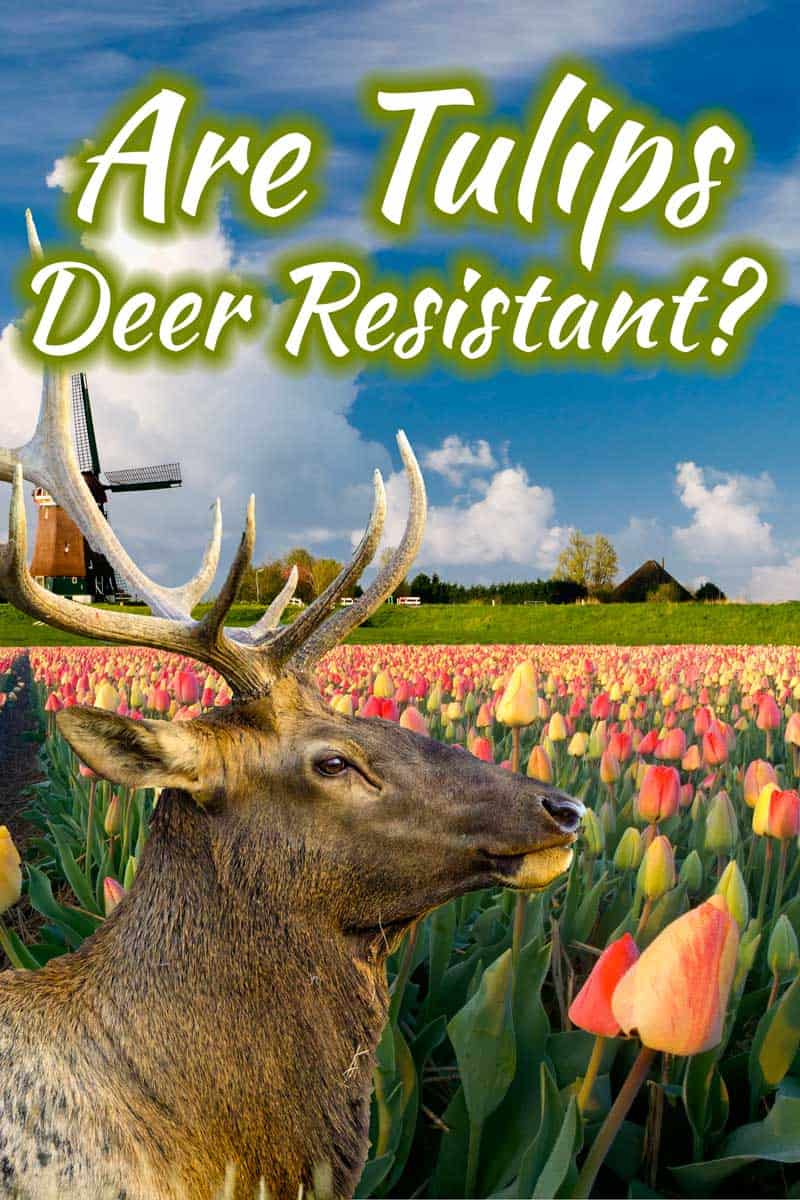 Are you thinking of planting flowers for the spring and are considering tulips, but you live near woods where deer tend to live. So you need to find out, are tulips deer resistant? Well, the good news is we have looked into this question and can help you find the answer.
Are you thinking of planting flowers for the spring and are considering tulips, but you live near woods where deer tend to live. So you need to find out, are tulips deer resistant? Well, the good news is we have looked into this question and can help you find the answer.
Are tulips deer resistant? The answer, unfortunately, is that deer love tulips. The Wildlife Society reports that when presented with a garden of spring flowers, tulips were one of the ones eaten most by the deer. They recommend planting daffodils since deer won’t eat those.
However, if you want to go ahead and plant tulips, then we can help you. There are a variety of different techniques to protect plants from deer, such as deer netting and repellent sticks. Also, we've researched a few others that may interest you, such as deer repellent lights and sprinklers. Read on to learn about techniques that have actually been shown to be effective.
Techniques for Repelling Deer
Deer Netting
Deer netting is a tight, lightweight netting that can be wrapped around a vegetable garden or thrown over a flower bed. It works fairly well. If you’re using deer netting on a flower bed, you may want to put stakes or a fence around the bed to hold the netting up. Deer can often eat plants through the netting if the netting is directly on top of the netting.
Some drawbacks to deer netting are that in the fall, it can stick to the plants it protects. In pulling it off, you can also pull leaves and branches off of bushes. Also, the deer netting collects fallen leaves. It has to be replaced each year. However, it is nearly invisible when placed over a flower bed and will protect it for a season. So deer netting is a valid solution, but not a perfect one.
Repellant Sticks
The next approach is repellant sticks that have garlic in them. These are small plastic sticks with a clip-on them. Clip them around the garden and flower beds where you want to keep deer and rabbits away from. Deer may eventually come to ignore the repellant smell and still go after a garden or the tulips. These will also need to be replaced every year, or even more often if there is heavy rain.
Motion Sensing Lights
There are a lot of different items on Amazon to choose from. The first item saw was motion-detecting lights that come on when a deer or other animal approaches the light. However, as with motion-sensing lights by the driveway, the lights may also come on when the wind shakes the tree branches, or when there is heavy rain. There is also a solar light that comes on at night and stays on. It flashes randomly to startle animals.
Sprinklers
Another type of repellant is sprinklers. Some sprinklers are motion-activated. Others use a timer and come on at dawn or dusk, the time when deer are most likely to be active. The theory behind them is that deer won’t like being sprayed in the face and will find a different place to eat. It seems logical.
The problem with these sprinklers is that you need to hook a hose up to them. That is fine for gardens or planters near the house. But what if your garden is fifty feet from the house? Are you going to run a hose all the way out there? Will you remember to unhook the hose every time you have to mow the lawn?
Protecting Tulip Bulbs
It is important to protect tulip bulbs from deer so that the flowers can get a chance to grow. One suggestion is to plant bulbs deeper in the ground then you might think. Another approach is to plant a mesh or fence a foot or so under the ground all around the tulip bed.
This will make it harder for deer or other animals to dig down and eat the tulip bulbs. A final suggestion is to apply mulch over the bulbs, but wait until it is cold out. You don’t want animals moving into your mulch to build a nest for the winter.
I hope this will help you solve your deer problem. Good luck with your tulips and enjoy a beautiful bed of flowers in your yard.
